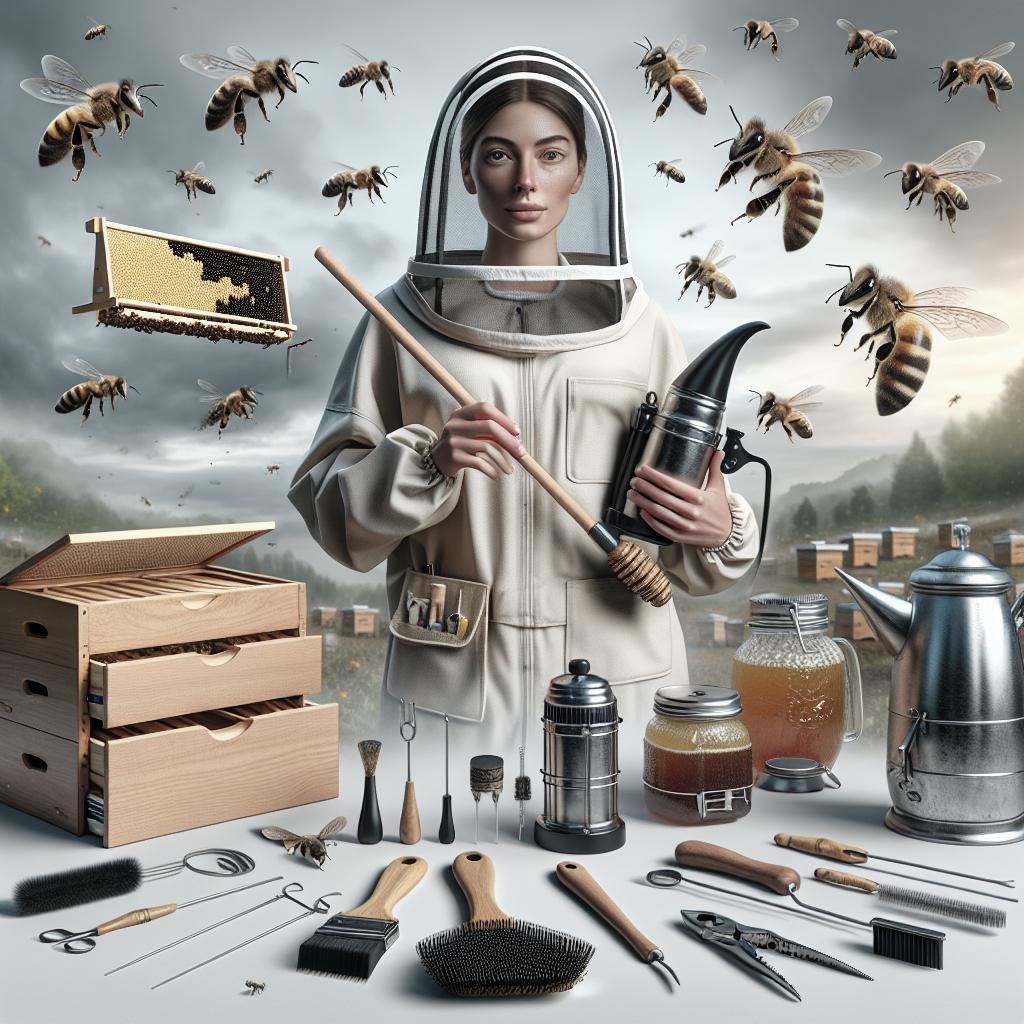Threats to Bee Populations
Bees are crucial pollinators, contributing significantly to global agriculture and biodiversity. However, bee populations face numerous threats that endanger their survival and the ecosystems that depend on them. This article explores these threats, from Colony Collapse Disorder (CCD) to pesticide exposure. It dives into the reasons behind these phenomena, the steps being taken to mitigate them, and the role of the Environmental Protection Agency (EPA) in safeguarding bee health. For those interested in assisting these vital insects, we’ll also present ways that individuals and communities can contribute positively. By understanding the challenges bees face, we can better appreciate their importance and take action to protect them.
On this page:
- Discovering a Problem
- Dead Bees Don’t Necessarily Mean CCD
- Why It’s Happening
- What is Being Done
- What EPA is Doing
- For More Information
Discovering a Problem
Bees play a pivotal role in ecosystems, contributing to the pollination of over 75% of the world’s flowering plants, including many food crops. This vital service is estimated to be worth billions of dollars each year. Despite their importance, bee populations have been declining at alarming rates, with some species threatened or even facing extinction. The dramatic reduction in bee numbers has raised global concerns among scientists, environmentalists, and agricultural sectors.
The phenomenon first caught significant attention with the identification of Colony Collapse Disorder (CCD) in the mid-2000s. Beekeepers started reporting unusual losses where worker bees would disappear en masse from hives, leaving behind queens and immature bees. This mysterious decline highlighted the urgent need to investigate and address the threats to bee populations.
Dead Bees Don’t Necessarily Mean CCD
While CCD has been a focal point in discussions about bee health, not all bee deaths are attributable to this disorder. Various other factors contribute to the decline in bee populations, making it crucial to distinguish between CCD and other causes of bee decline. For instance, while CCD is characterized by the sudden disappearance of worker bees, other scenarios might involve visible signs of disease or pesticide exposure.
Understanding these differences is key to developing effective solutions. While CCD involves a specific set of symptoms, bees can also be significantly affected by parasites, viruses, and environmental changes, each requiring distinct research and intervention strategies.
Why It’s Happening
The decline in bee populations is driven by multiple, often interconnected, factors. Pesticide exposure is one of the leading threats, with neonicotinoids—commonly used insecticides—proven to be particularly harmful to bees. These chemicals can affect bees’ ability to forage, reproduce, and thrive, contributing significantly to mortality rates.
Additionally, habitat loss due to urbanization and agricultural expansion deprives bees of essential foraging grounds and nesting sites. Changes in climate further complicate the scenario, altering the availability of flowers and impacting the lifecycle and health of bees. Finally, invasive species and pathogens, like the Varroa mite, put additional pressure on already stressed bee populations.
What is Being Done
Addressing the decline of bee populations requires a multi-faceted approach involving research, regulation, and community engagement. Scientists are actively researching bee diseases, developing resistant bee breeds, and investigating alternative pest control methods that are less harmful to pollinators.
On a regulatory level, some countries have moved to restrict or ban the use of harmful pesticides. Meanwhile, conservation efforts are being made to restore and protect natural habitats that are vital to the survival of bee populations. Community initiatives are also playing a role, encouraging practices like planting wildflower gardens and reducing pesticide use at home, which can support local bee populations and promote biodiversity.
What EPA is Doing
The Environmental Protection Agency (EPA) in the United States is a pivotal player in the efforts to protect bees. The organization conducts extensive research on the impact of pesticides and works to regulate and restrict the use of those found to be harmful to bee health. Furthermore, the EPA implements policies that support sustainable agricultural practices, aimed at creating safe environments for bee populations to thrive.
The EPA also collaborates with stakeholders, including agricultural communities, environmental groups, and international bodies, to develop comprehensive strategies and policies aimed at mitigating threats. The agency’s efforts are critical in spearheading nationwide and global initiatives that offer protection and bolster recovery for bee populations.
For More Information
For individuals interested in contributing to the protection of bees, numerous resources are available. Educational materials about bee-friendly gardening, pesticide usage, and local bee conservation projects offer practical advice for community involvement. Websites and organizations dedicated to pollinator health, such as The Pollinator Partnership and The Xerces Society, provide valuable insights and actionable steps to further the cause.
Keeping informed about the latest research and policy changes is another way to make a difference. By understanding current trends and scientific findings, individuals can advocate for bees effectively, whether through grassroots efforts or by supporting legislative initiatives designed to safeguard pollinators.
Final Thoughts
| Section | Summary |
|---|---|
| Discovering a Problem | Significant bee population declines due to CCD and other factors require investigation and solutions. |
| Dead Bees Don’t Necessarily Mean CCD | CCD involves specific symptoms, but other factors like disease and pesticides also impact bees. |
| Why It’s Happening | Factors like pesticide exposure, habitat loss, climate change, and pathogens drive bee declines. |
| What is Being Done | Efforts include research, regulation, habitat restoration, and community initiatives to protect bees. |
| What EPA is Doing | The EPA regulates pesticides, supports sustainable practices, and collaborates on bee protection strategies. |
| For More Information | Resources and organizations offer education, involvement opportunities, and updates on bee conservation. |


